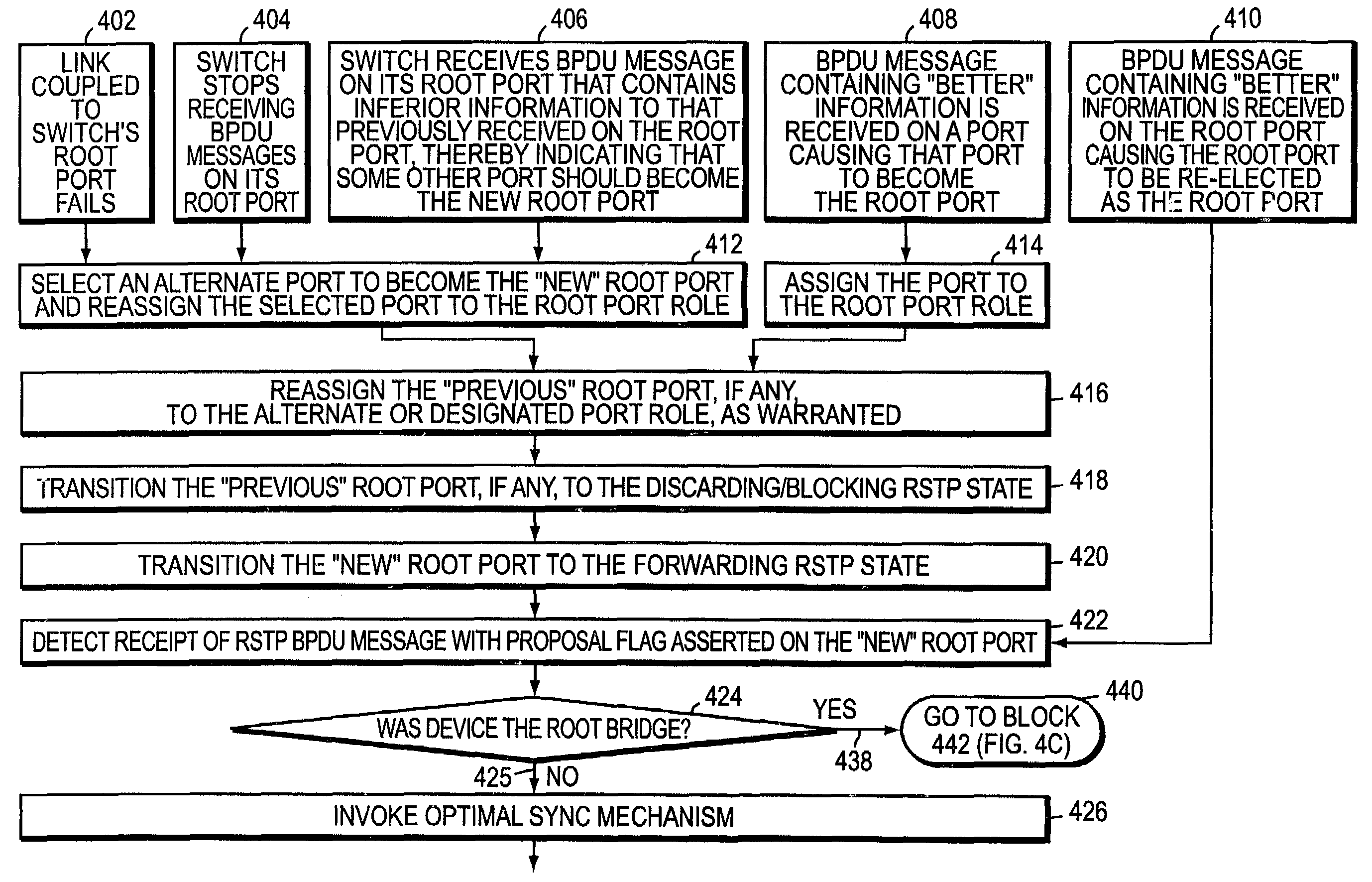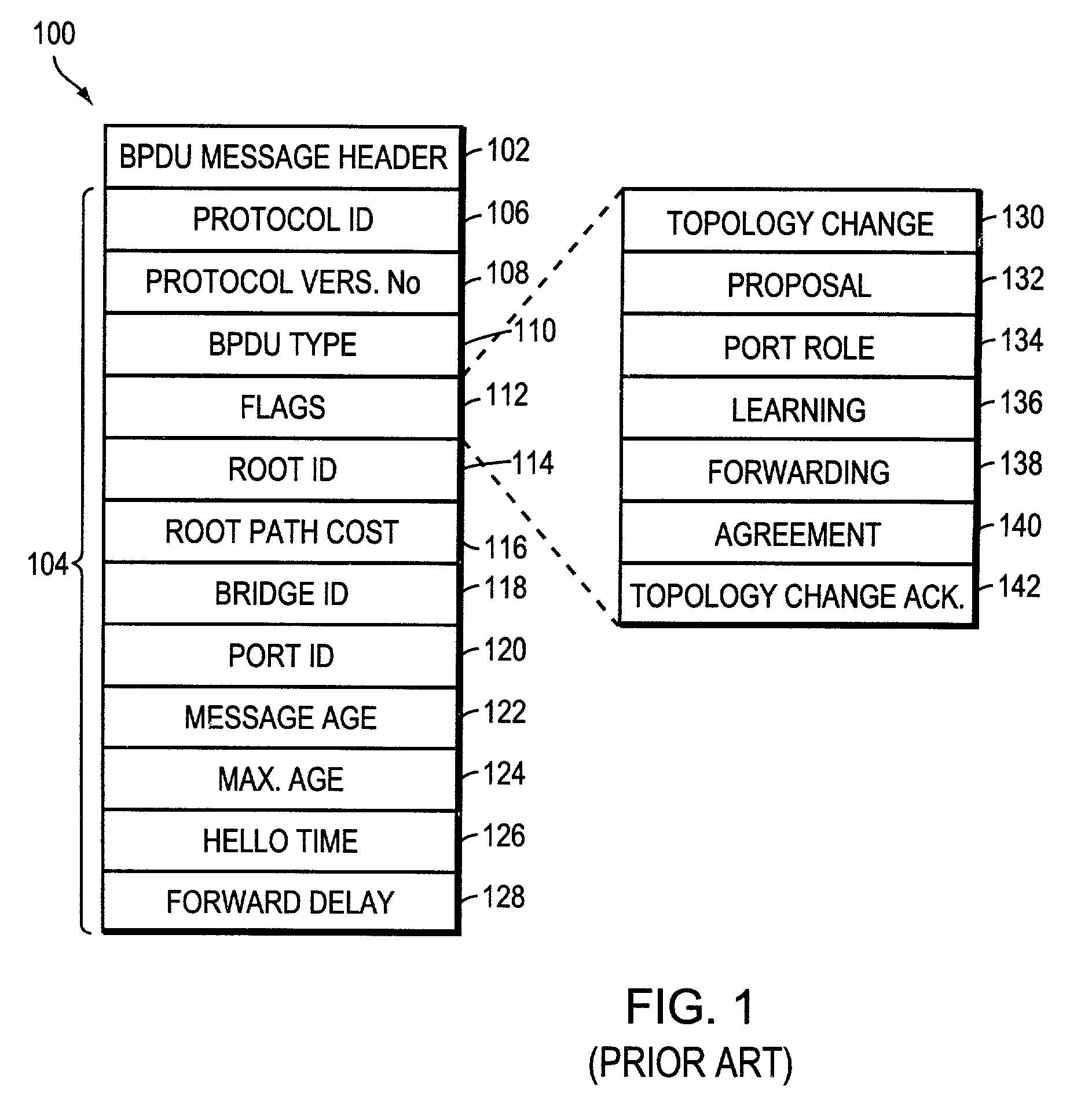Optimal sync for rapid spanning tree protocol
a tree protocol and rapid spanning technology, applied in the field of computer networks, can solve the problems of large proliferation of data frames, high undesirable loops, and formation of circuitous paths or “loops” within the network
- Summary
- Abstract
- Description
- Claims
- Application Information
AI Technical Summary
Benefits of technology
Problems solved by technology
Method used
Image
Examples
Embodiment Construction
[0030]FIG. 2 illustrates a partially meshed bridged network 200 in accordance with the present invention. The network 200 preferably comprises a plurality of local area networks (LANs) 202–210 that are interconnected by a plurality of intermediate devices, such as switches 212–217. One or more entities or hosts (not shown) are preferably coupled to each LAN 202–210 so that the entities may source or sink data frames to one another over the network 200. Each switch 212–210, moreover, preferably includes a plurality of ports 302 such that each LAN 202–210 is coupled to at least one port of switches 212–217.
[0031]At least some of the switches 212–217 may be interconnected by a series of links, such as point-to-point links 220–222, rather than by the LANs. Links 220–222 similarly carry messages, such as data frames, between respective switches. Each switch 212–217, moreover, preferably identifies its own ports 302, e.g., by port numbers, such as zero, one, two, three, etc. Switches 212–...
PUM
 Login to View More
Login to View More Abstract
Description
Claims
Application Information
 Login to View More
Login to View More - R&D
- Intellectual Property
- Life Sciences
- Materials
- Tech Scout
- Unparalleled Data Quality
- Higher Quality Content
- 60% Fewer Hallucinations
Browse by: Latest US Patents, China's latest patents, Technical Efficacy Thesaurus, Application Domain, Technology Topic, Popular Technical Reports.
© 2025 PatSnap. All rights reserved.Legal|Privacy policy|Modern Slavery Act Transparency Statement|Sitemap|About US| Contact US: help@patsnap.com



